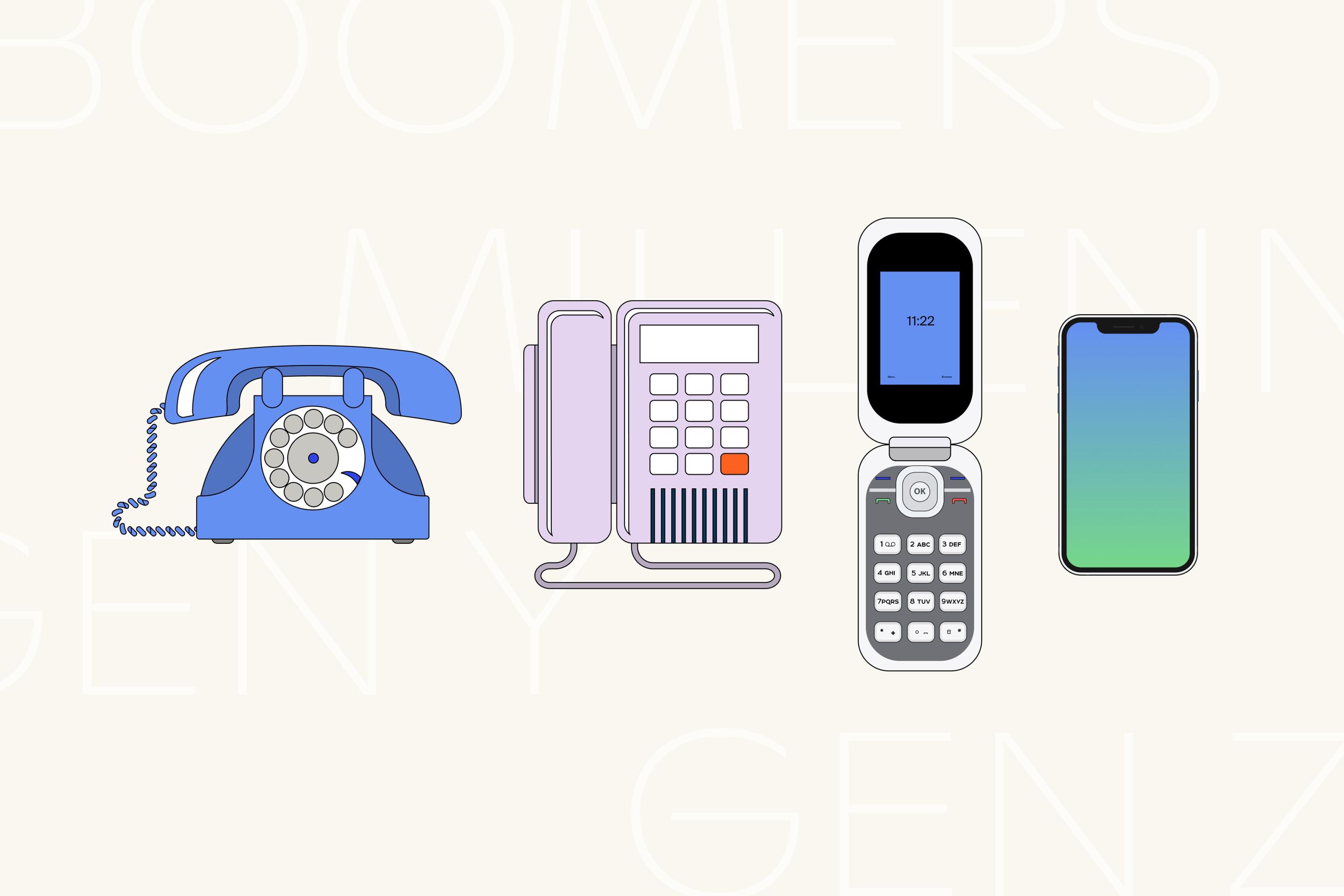Regardless of what’s happening in the world, building relationships with Gen Z should be fundamental to your recruiting strategy. Why?
The US Bureau of Labor Statistics estimates that Gen Z will comprise about 30% of the global workforce by 2030. Employers must recruit and retain early talent today to plan for the future of work.
While it’s widely documented that Gen Z is the most racially and ethnically diverse in US history to date, it’s important to note that another form of workplace diversity is employees’ range of ages and experiences.
This article offers an overview of the generations currently represented in the workforce: baby boomers, Gen X, millennials/Gen Y, and will pay special attention to Gen Z, the newest generation to enter the workforce.
Cover your bases
Refer to the “trading cards” in this post to help you understand some generational workplace nuances and hit early talent recruiting out of the park. Use these as a quick reference to think through:
- Authenticity–of messaging, materials, and relationships
- Connectivity–how are these generations currently engaging on digital platforms like Handshake and in your workforce?
- Discovery–each generation is unique, with their own shared language and reference points!
- Relatability–for establishing common ground, and what can be learned from each other
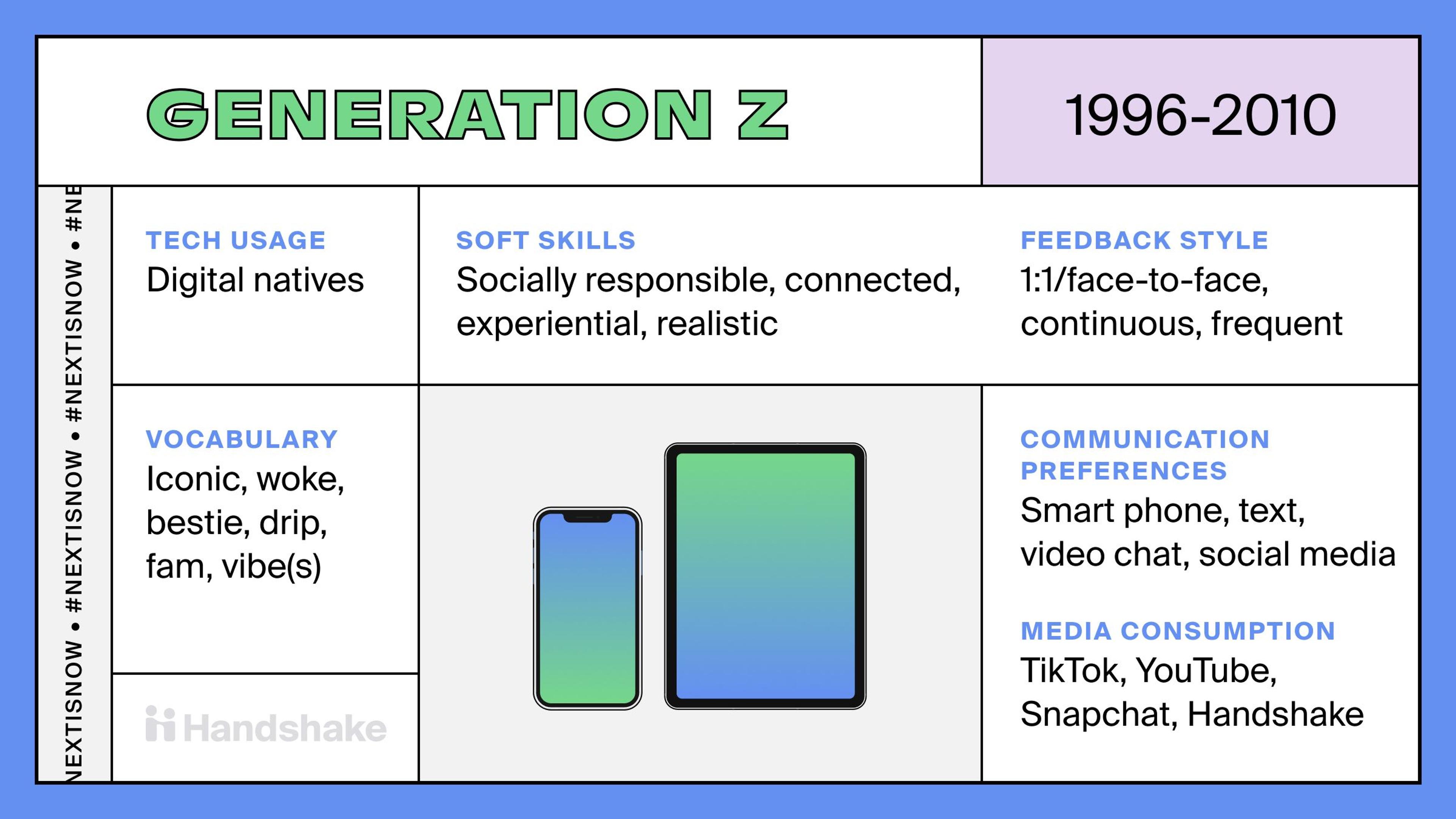
Generation Z
Born between 1996-2010, Gen Z are digital natives.
They haven’t experienced schooling or work without technology. Their primary device is the smartphone on which they stream content, participate in video chats, pay for goods and services, look for jobs, and take and share pictures (who needs an actual camera anymore?).
With the ability to connect with the world at their fingertips, it may come as a surprise that Gen Z craves 1:1 connections and the opportunity to build meaningful personal and professional relationships.
They also look for frequent, ongoing feedback on the job. Socially responsible and realistic, they are holding companies accountable on major issues and prefer to apply to jobs at employers with shared core values. They expect the brands that they work for and buy from to be authentic, and seek financial security in their careers.
Dig deeper into what Gen Z wants from employers for more insights on how to stack your team with an all-star lineup of early talent!
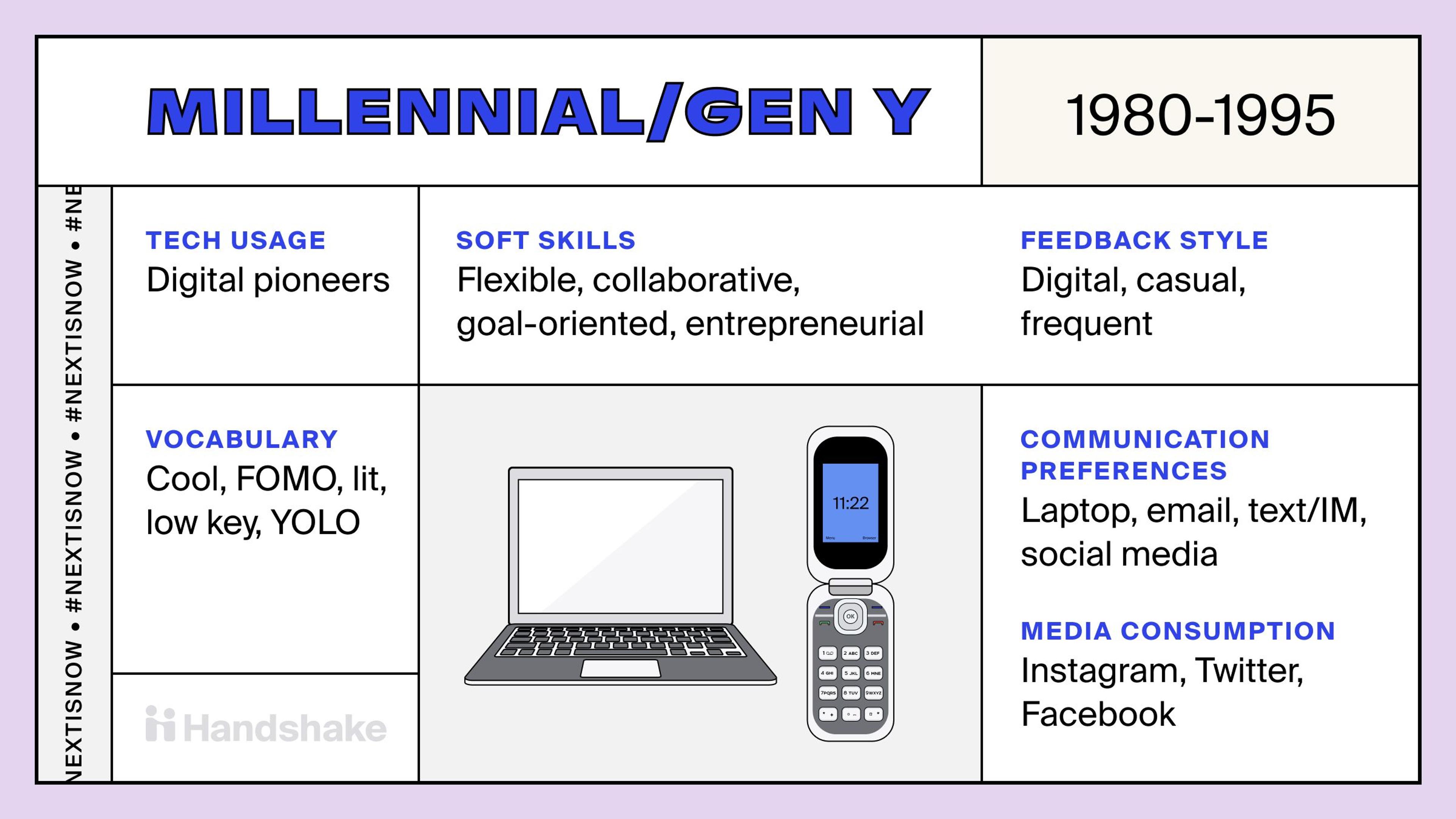
Millennials
Millennials (also known as Gen Y) were born between 1980-1995 and are considered digital pioneers, with many having grown up straddling the analog and digital worlds. One big technology advance during millennials’ lifetimes has been the widespread adoption of smart phones, and millennials are right there with Gen Z on their reliance on apps.
Many millennials had AOL Instant Messenger (remember your “AIM name”?) and are still fluent in 1:1 text and chat (now referred to as “DMs”). This generation came of age at the same time that social media was being developed, and tend to document and share content with their communities online.
Like Gen Z, they are values-driven and understand the power of using their voices to impart change. They believe civil society and corporations can and should do more to close social justice and equity gaps.
At work, millennials are known for being collaborative and entrepreneurial. Also similar to Gen Z, millennials desire casual, frequent feedback as they continue to advance in their careers. Millennials now comprise 35% of the workforce, so if you aren’t a millennial yourself, you are likely working with them!
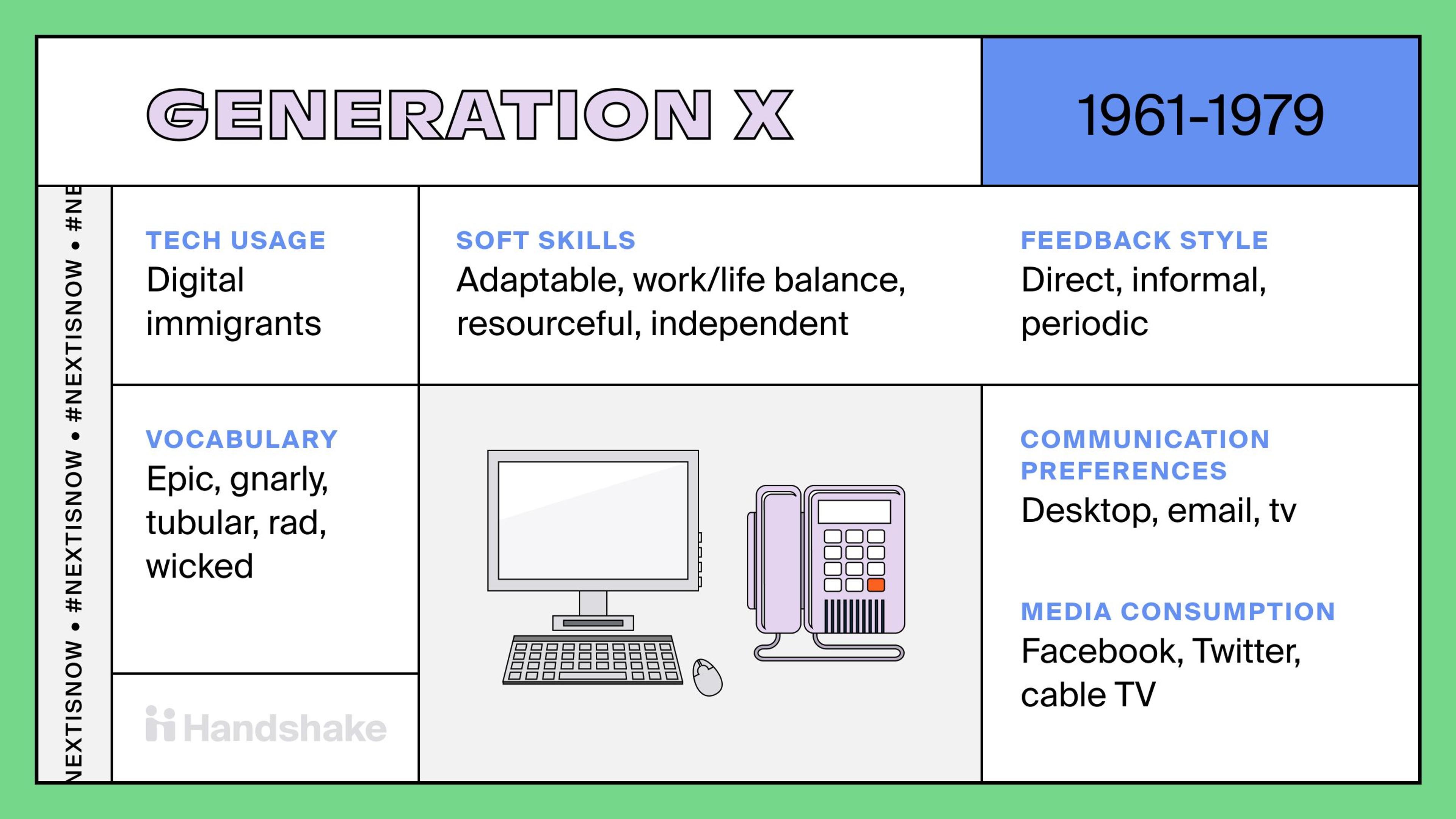
Generation X
Born between 1961-1979, the Gen X population is smaller than the baby boomer generation before them and the millennial generation after them.
As they came of age, Gen X was exposed to major global political affairs and scientific advancements like space exploration and the birth of the computer. They were the first video gamers (remember Atari?) and many were raised on TV. As digital immigrants, they didn’t grow up with the internet and many are still cable TV loyalists. But “adaptable” Gen X has embraced social media platforms.
At work, you may experience that Gen X’s feedback preference is direct, informal, and periodic–in contrast to millennials’ and Gen Z’s quest for frequent, ongoing feedback. Soft skills for Gen X include independence, resourcefulness, and an affinity for work/life balance.
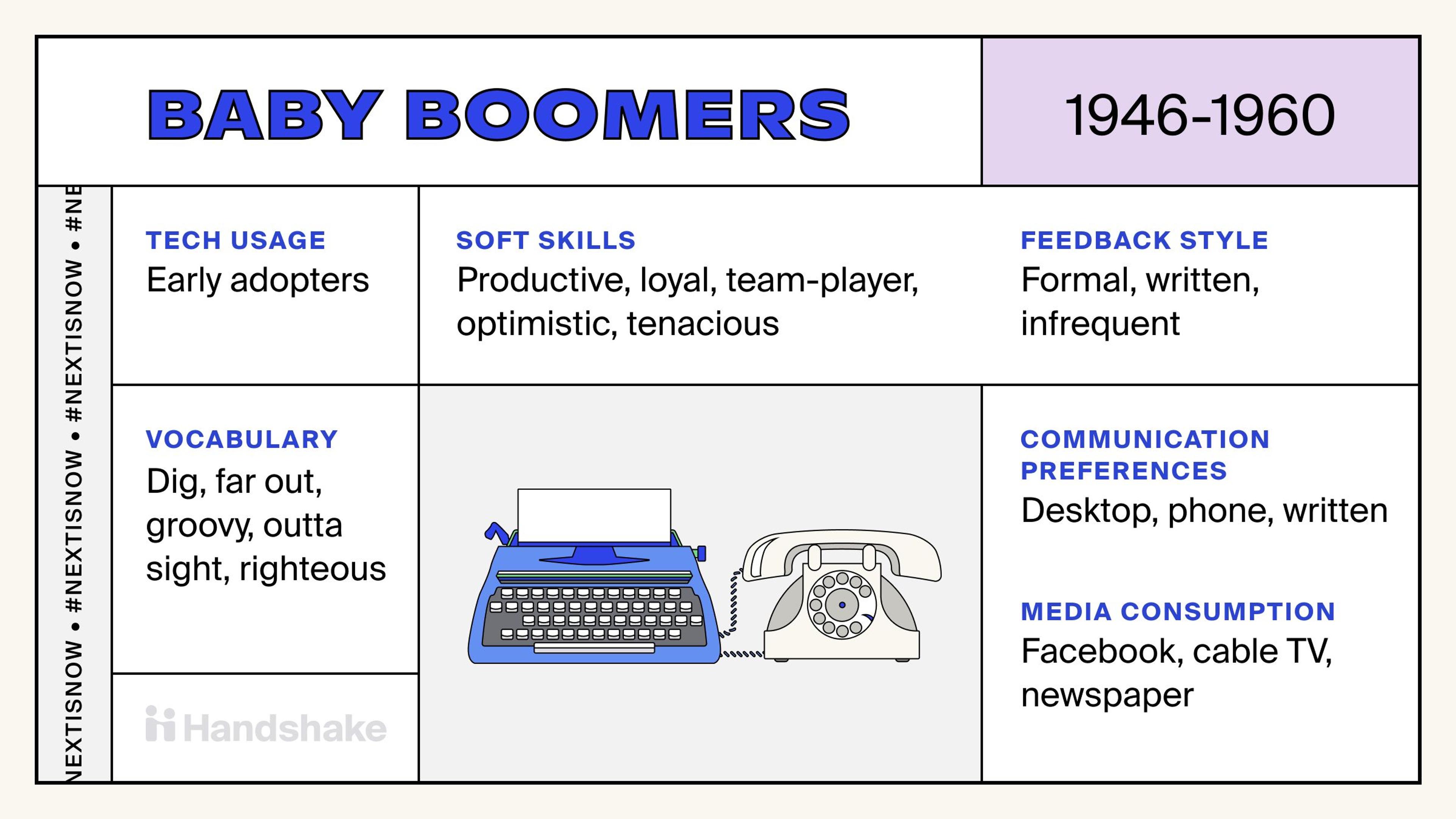
Baby boomers
Born between 1946-1960, baby boomers were the most populous generation before being overtaken by millennials.
As early adopters of technology, this generation has experienced a massive evolution in gadgets: from radio to color TV, print media to social media, they’ve used it all. That said, you might find that many baby boomers still prefer communicating by phone and reading print publications.
Baby boomers’ work experience has skewed toward a time when office dress codes were professional, and their feedback style is more formal, too–delivered on paper and infrequently. Baby boomers are known for being team players, optimistic, and tenacious–qualities which are key to mentoring Gen Zers!
Your Gen Z game plan
With all of this in mind, here are 10 ways to include and recruit Gen Z into your multigenerational workforce.
- Remember what it was like to start your first job out of college? Get into the student mindset: early talent is hungry for advice from those who have been in their shoes. The baby boomers in your workforce, a generational group that has a desire to mentor, and millennials who are known for being collaborative, may make for wonderful onboarding buddies for early talent! Does your organization currently offer structured mentorship program for early career professionals?
- To ensure your pipeline is diverse and representative of Gen Z’s demographics—49% of Gen Zs in the US are people of color—you can source candidates using Segment filters to explore ways to find qualified students from underrepresented groups; minority-serving institutions, including HBCUs, MSIs, and women’s colleges; and diversity and inclusion-focused student organizations.
- Since 90% of Gen Z believes companies should act in support of social and environmental issues, make sure your Handshake Brand Page and your messaging across channels includes a compelling mission statement.
- While Gen Z is trending toward being a more educated generation than millennials, their concerns about debt may also lead them to explore alternative programs to learn skills. Broaden your school strategy and expand job qualifications to include all types of learning programs, such as community colleges or online courses.
- The top 3 preferred methods of communication to recruit Gen Z are email, face-to-face, and phone. Make sure your recruiting and retention strategies incorporate your audience’s communication preferences! For example, use Handshake Campaigns to message students about opportunities and upcoming events to build stronger relationships.
- Did you know a “finsta” or “spam” account is what Gen Z calls a private social media account for select friends/family? Understanding how each generation uses social media differently can be a critical competitive advantage for your recruiting program and your brand. Get best practices for posting social content on the Handshake feed.
- Building authentic relationships to recruit Gen Z will be critical to your pipeline for years to come. Use Handshake Advocates to foster relationships between candidates and current employees to help Gen Z build their professional networks and gain the face-to-face interaction they seek.
- Gen Z are avid communicators and find reminders (i.e. event RSVPs, application deadlines) helpful. There can be frustration from both the candidate and the recruiter’s perspectives if there is a missed connection; clarify in your messages if a response is needed to foster a feedback loop. Stay in touch on Handshake.
- Hybrid recruiting is here to stay to attract Gen Z talent and meet them where they are. Gen Z likes to work independently, self-paced, in the environment of their choosing. From meeting them on Handshake to bringing them onboard at your company, the entire candidate journey should have both in-person and virtual touchpoints.
- To level the playing field for all candidates, no matter where they are located or what their background, explore how you can recruit for early career roles by expanding your school partnerships nationally.
The ball’s in your court
Understanding the nuances of how each generation prefers to communicate, consume information, and grow in their careers is critical to the organizational health of your workforce. As digital natives, Gen Z is accustomed to being able to access information on demand. That’s why a hit parade of activity on Handshake is the best way for your company to stay top of mind for early talent.
With these tips and a better understanding of how Gen Z is diverse, socially-responsible, and hungry to make professional connections to help them kickstart and guide their careers can help you stand out from competition–and hit early talent recruiting out of the park!
